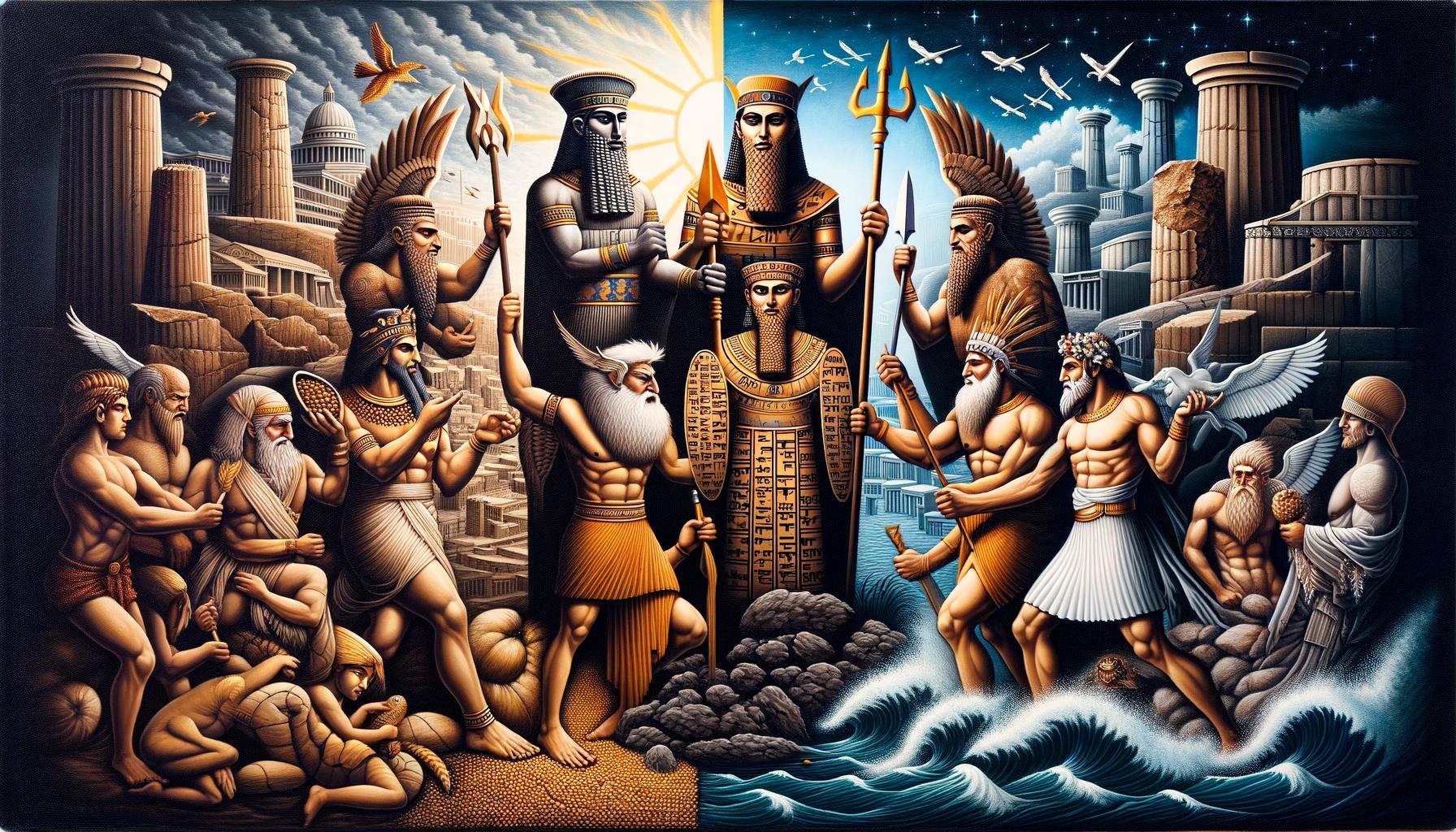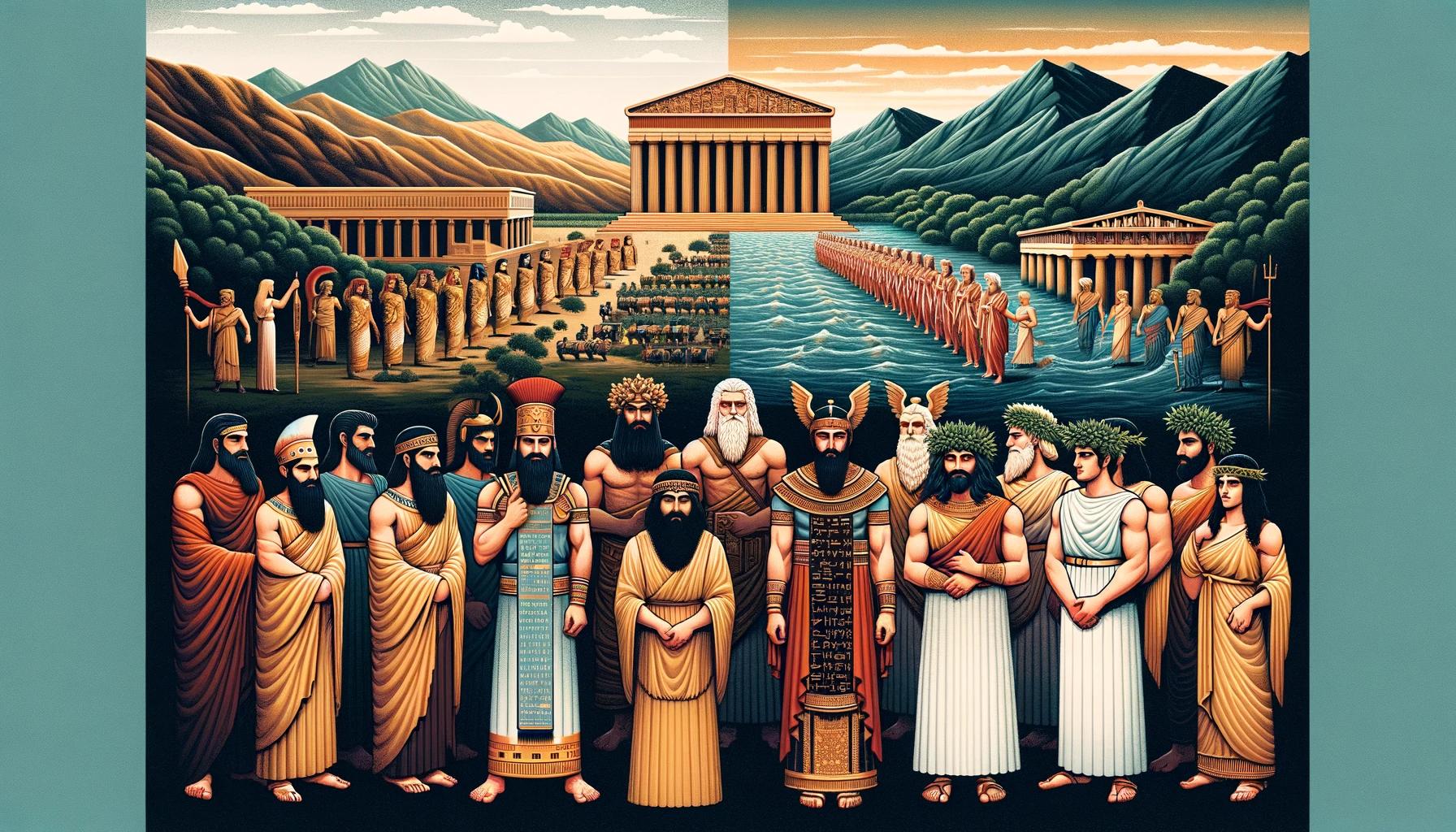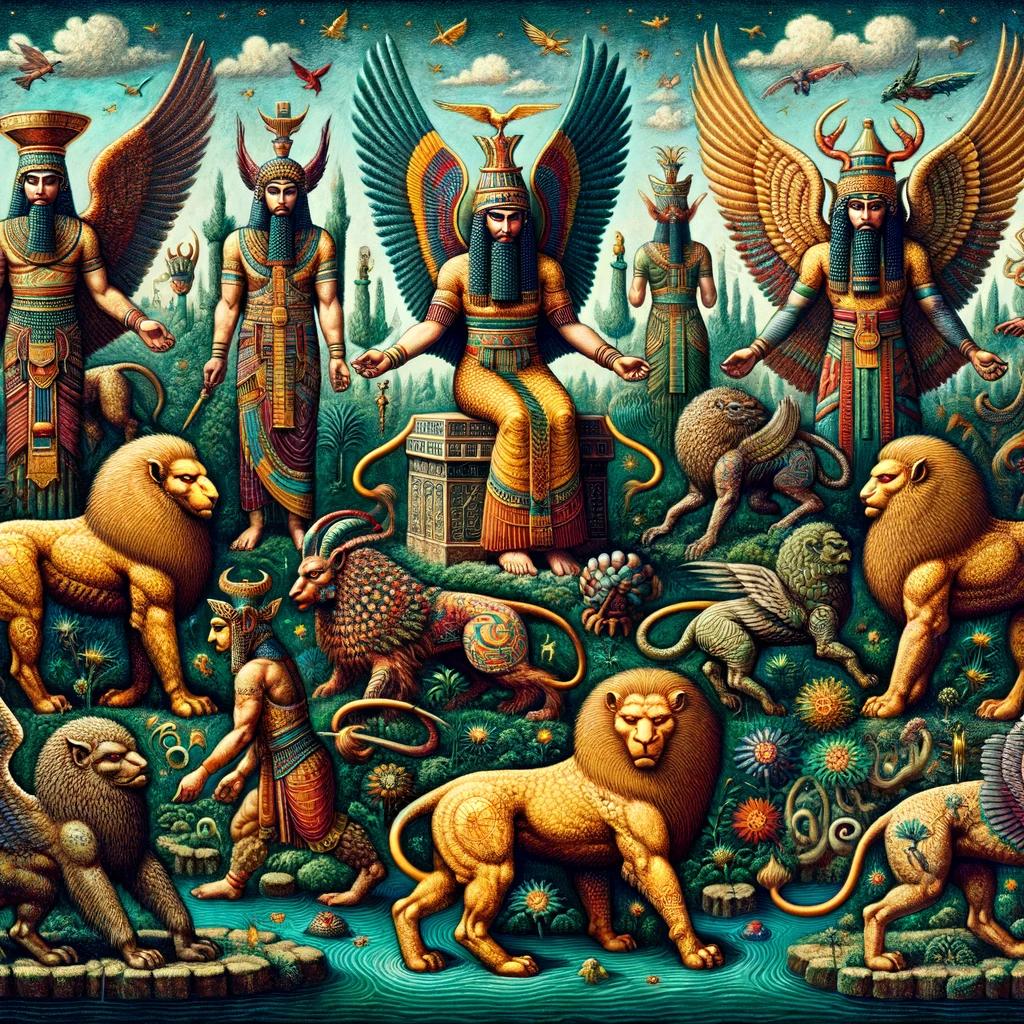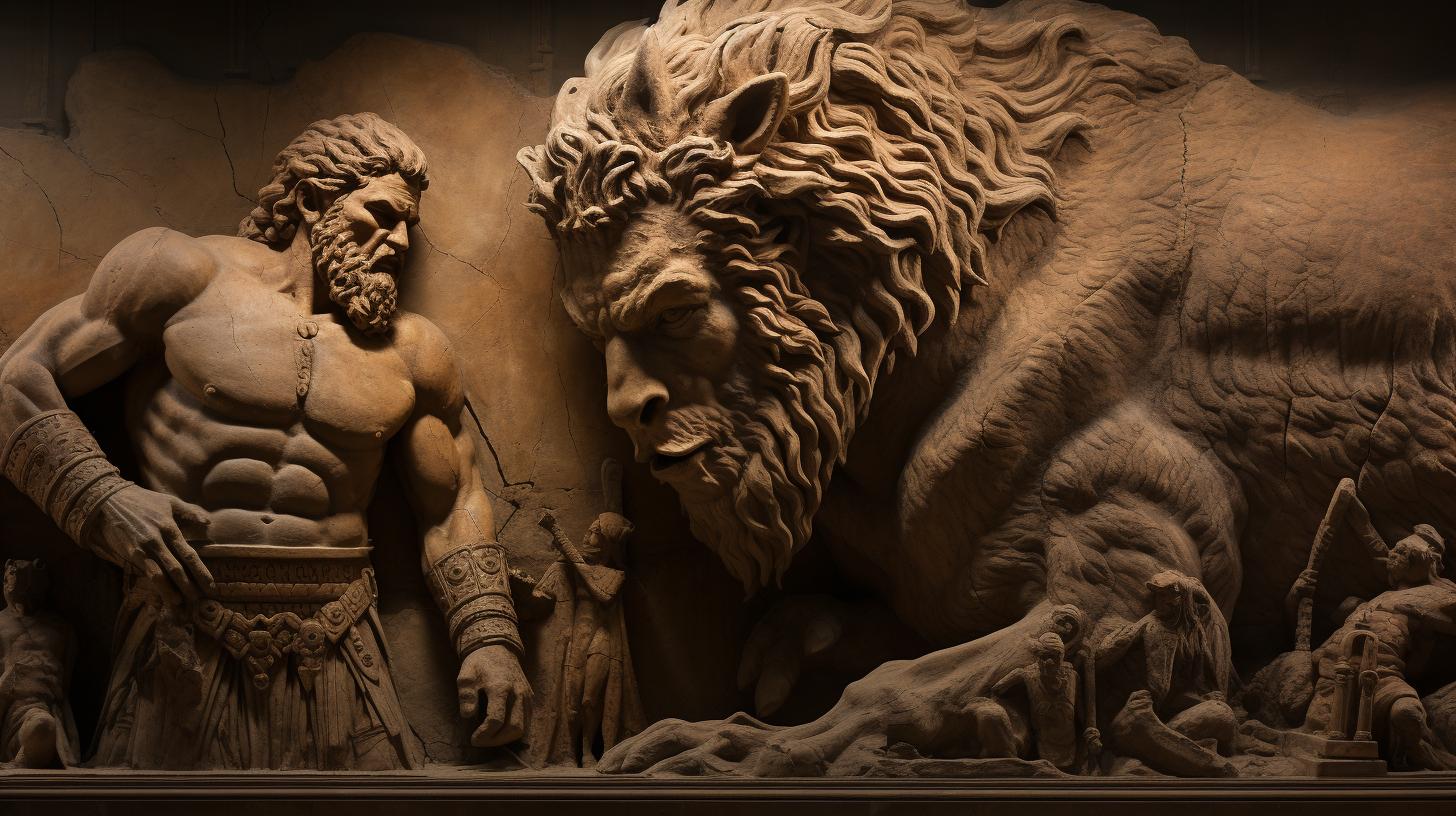Exploring the Majestic Ancient Mesopotamian Ziggurats
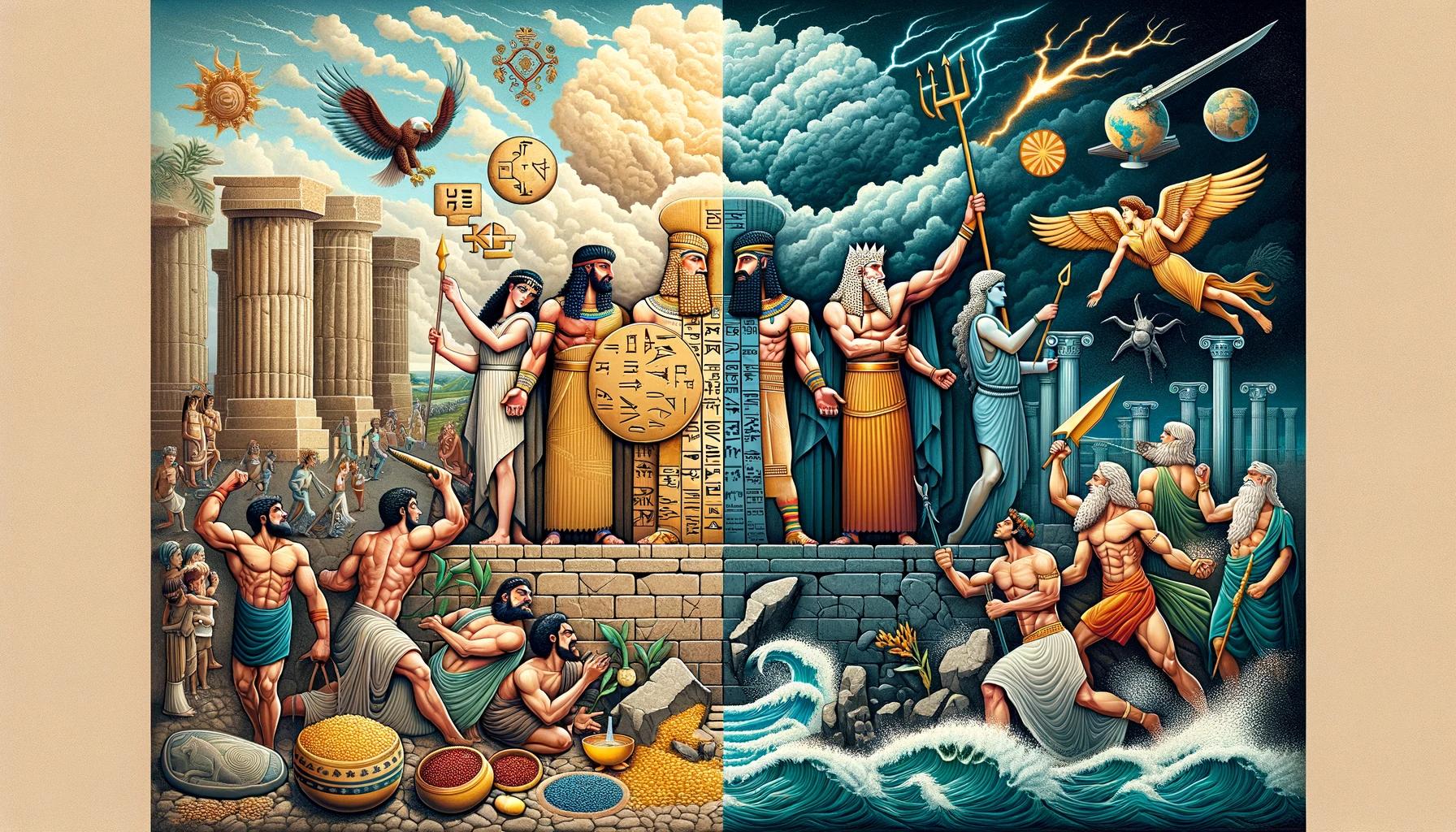
The ancient Mesopotamian ziggurats were prominent architectural and religious structures in Mesopotamia. Built between 2200 and 500 BCE, these stepped pyramids were made of mud bricks on the inside and baked bricks on the outside.
While approximately 25 ziggurats existed, none have been preserved to their original height. These structures served as homes for the city gods, with temples at the top housing their statues. Ziggurats were not only religious centers but also important economic hubs.
Despite their historical significance, the preservation and conservation of ziggurats present ongoing challenges. The legacy of Mesopotamian architecture continues to inspire and fascinate us to this day.
The Ancient Mesopotamian Ziggurat of Ur
The ziggurat of Ur is considered one of the most remarkable ancient structures in Mesopotamia.
Located in present-day Iraq, this ancient ziggurat holds great historical and architectural significance.
The ziggurat of Ur was built as a religious and administrative center, dedicated to the worship of the city’s patron deity.
This stepped pyramid was constructed using mud bricks, with an exterior layer of baked bricks that gave it both strength and durability.
Standing at a height of approximately 70 feet, the ziggurat of Ur was an imposing sight in the ancient city.
Its terraces and staircases allowed for easy access to the temple at its summit, where religious ceremonies and offerings were made to the gods.
Archaeological excavations at the site have uncovered various artifacts, including statues, pottery, and inscriptions, providing valuable insights into the religious practices and beliefs of the ancient Mesopotamians.
The ziggurat of Ur is a testament to the architectural and engineering prowess of the ancient Mesopotamians. Its construction and grandeur showcase the importance of religious rituals and the power of the ruling elite in shaping the civilization of ancient Mesopotamia.
Discovering the History and Significance of Ziggurats
The ancient Mesopotamian ziggurats hold a significant place in history, serving as architectural wonders and sacred structures. This section delves into the purpose and function of ziggurats in Mesopotamia, explores their unique architecture and construction techniques, and delves into their religious significance.
The Purpose and Function of Ziggurats in Mesopotamia
Ziggurats served as more than just towering structures; they held great religious and social significance in ancient Mesopotamia. These monumental pyramids were believed to be the earthly homes of city gods, with temples at the summit where priests performed rituals and worshipped.
They were seen as a bridge between heaven and Earth, allowing the priests to communicate with the divine.
Beyond the religious aspect, ziggurats also played a role in societal organization and control.
The construction and maintenance of these impressive structures required significant resources and manpower, leading to the creation of a complex labor system and fostering a sense of collectivism among the people.
Exploring the Ziggurat Architecture and Construction Techniques
The architecture of ziggurats showcased the advanced engineering skills and craftsmanship of ancient Mesopotamians. These stepped pyramids were built using a combination of mud bricks and baked bricks, creating a sturdy and visually striking structure.
One of the key architectural features of ziggurats was their stepped design, consisting of multiple ascending levels or terraces. Each level was slightly smaller than the one beneath it, creating a distinctive staircase-like appearance.
The outer façade of ziggurats was often adorned with colorful glazed bricks, depicting religious and mythological motifs.
To ensure the stability of these massive structures, the ancient Mesopotamians employed various construction techniques.
The use of mud bricks on the inner core provided structural strength, while baked bricks on the outer surface protected against weathering and erosion. Additionally, recessed buttresses and staircases enhanced the stability and accessibility of ziggurats.
The Religious Significance of Ziggurats in Ancient Mesopotamia
Ziggurats held profound religious significance in ancient Mesopotamian culture. They were regarded as sacred spaces, where the city gods resided and were worshipped by the priests and the citizens. As intermediaries between the people and the gods, the priests ascended to the summit of the ziggurat to perform rituals and offer prayers on behalf of the community.
These religious ceremonies and offerings were believed to appease the gods and ensure their favor, which was essential for the well-being and prosperity of the city and its inhabitants. The ziggurats were not only places of worship but also served as centers of spiritual and cultural life, attracting pilgrims and devotees from far and wide.
Understanding the history and significance of ziggurats gives us a glimpse into the religious, social, and architectural marvels of ancient Mesopotamia, showcasing the ingenuity and faith of this remarkable civilization.
Unveiling the Secrets of the Ziggurat of Ur
Embark on a journey to uncover the enigmatic secrets of the Ziggurat of Ur, an ancient Mesopotamian marvel that continues to captivate historians and archaeologists alike.
This section delves into the design, excavation, restoration, and the remarkable artifacts and reliefs found at this sacred site.
A Closer Look at the Ziggurat’s Design and Layout
Gain insight into the intricacies of the Ziggurat of Ur’s design and layout. Explore the unique architectural features and discover the skillful craftsmanship incorporated into its construction. Learn about the symbolism behind its stepped pyramid shape and the arrangement of its terraces.
The Excavation and Restoration of the Ziggurat of Ur
Uncover the fascinating story of the excavation and restoration efforts at the Ziggurat of Ur. Dive into the challenges faced by archaeologists as they carefully unearthed and preserved this ancient wonder.
Explore the techniques employed to safeguard its structural integrity.
The Artifacts and Reliefs Found at the Ziggurat Site
Immerse yourself in the treasures discovered at the Ziggurat of Ur. Marvel at the intricate carvings and reliefs that adorned the temple walls, depicting scenes from ancient Mesopotamian mythology and daily life.
Gain insight into the religious rituals and practices associated with these artifacts.
The Story Behind Mesopotamian Ziggurats
As we delve into the intriguing world of ancient Mesopotamian ziggurats, we uncover a rich historical background and explore the enduring legacy of these remarkable structures. The story of Mesopotamian ziggurats is one that spans centuries and encompasses various cities that were part of this ancient civilization.
The Historical Background of Mesopotamian Ziggurats
In order to understand the significance of ziggurats, it is essential to grasp the historical context in which they emerged. Mesopotamia, often referred to as the cradle of civilization, was home to the earliest known human settlements.
It was a land between two mighty rivers, the Tigris and the Euphrates, where several city-states flourished.
The construction of ziggurats began with the Sumerians, who laid the foundation for this unique architectural style.
These stepped pyramidal structures quickly gained prominence as religious and ceremonial centers within the city-states. Each city had its own ziggurat dedicated to a specific deity worshipped by its inhabitants.
Comparing Ziggurats Across Mesopotamian Cities
While ziggurats shared a similar form, each city boasted its own distinctive designs and architectural features.
For example, the Ziggurat of Ur, located in modern-day Iraq, is one of the most famous and well-preserved examples. Its imposing presence and intricate construction reflect the advanced architectural techniques of the time.
In contrast, the Ziggurat of Babylon, also known as Etemenanki, stands as a testament to the grandeur and power of the Babylonian empire. Historians believe that this ziggurat was associated with the legendary Tower of Babel, mentioned in ancient texts.
The Influence and Legacy of Ziggurats in Ancient Babylon
The ziggurats of Mesopotamia, particularly those in Babylon, left an indelible mark on the region’s cultural landscape. These towering structures not only served as religious centers but were also symbols of the rulers’ authority and their close connection to the gods.
Furthermore, the architectural techniques and engineering innovations employed in the construction of ziggurats influenced subsequent civilizations and architectural styles throughout history. The legacy of Mesopotamian ziggurats can be seen in structures such as the pyramids of Egypt and even modern skyscrapers.
In conclusion, the story behind Mesopotamian ziggurats is one that intertwines religious beliefs, architectural achievements, and the vibrant history of this ancient civilization. By examining the historical context, comparing different ziggurats, and understanding their influence, we gain a deeper appreciation for the significance of these monumental structures in shaping the course of human history.
Ziggurats and the Cultural Significance of Mud Bricks
The cultural significance of mud bricks in the construction of ziggurats cannot be overstated. These ancient Mesopotamian structures were built using mud bricks as a primary building material, showcasing the ingenuity and resourcefulness of the civilization.
Understanding the Use of Mud Bricks in Ziggurat Construction
Mud bricks, or adobe bricks, were commonly used in the construction of ziggurats due to their abundance and ease of production. The Mesopotamians would mold bricks from a mixture of clay, sand, and water, and then dry them in the sun.
These bricks provided the foundation and structure for the ziggurats, ensuring their stability and durability.
The Role of Mud Bricks in Mesopotamian Architecture
Mud bricks were not only utilized in ziggurat construction but also played a crucial role in various other Mesopotamian architectural endeavors. From houses to temples and city walls, mud bricks were a versatile building material used extensively throughout the region.
Exploring the Challenges and Innovations of Mud Brick Construction
While mud bricks were easily accessible, their usage came with challenges. The Mesopotamians had to consider factors such as brick strength, weather resistance, and protection against moisture. To overcome these challenges, they developed innovative techniques such as incorporating reeds or straw into the mud brick mixture to reinforce their strength and insulation.
Mud brick construction also required regular maintenance and repair due to the impact of weather and erosive forces. The continuous rebuilding of ziggurats by Mesopotamian rulers demonstrates their commitment to preserving these religious structures and their cultural legacy.
The innovations and expertise demonstrated by Mesopotamians in mud brick construction showcased their advanced engineering skills and dedication to constructing architectural marvels that stood the test of time.
Tepe Sialk: An Ancient Ziggurat Outside Mesopotamia
Tepe Sialk, located outside Mesopotamia, presents fascinating ziggurat-like structures that offer insights into ancient civilizations.
These structures, similar in design to Mesopotamian ziggurats, captivate researchers and historians alike.
Discovering the Ziggurat-like Structures at Tepe Sialk
Excavations at Tepe Sialk have revealed the presence of impressive ziggurat-like structures. These stepped platforms bear striking resemblances to the Mesopotamian ziggurats, showcasing intricate architectural techniques and cultural connections. They exhibit a mastery of construction and reflect the religious and societal significance of ziggurats in ancient civilizations.
Exploring the Similarities and Differences with Mesopotamian Ziggurats
While Tepe Sialk’s ziggurat-like structures share common architectural features with Mesopotamian ziggurats, there are notable differences as well. The construction materials and methods employed may vary, providing valuable insights into regional variations in ancient architectural practices.
Examining these similarities and differences deepens our understanding of the diverse cultural and artistic expressions across ancient civilizations.
The Significance of Tepe Sialk in Understanding Ancient Civilizations
Tepe Sialk holds immense significance as it expands our knowledge of ancient civilizations beyond Mesopotamia. The presence of ziggurat-like structures suggests the existence of shared religious and cultural practices across regions, fostering connections and exchanges between different city states.
By studying Tepe Sialk, we can better comprehend the broader context and complexities of ancient societies and their architectural achievements.
The Legacy of Ziggurats in Modern Times
The ancient Mesopotamian ziggurats hold a significant legacy that continues to resonate in modern times. These architectural marvels, once dedicated to religious practices, have undergone preservation efforts and face ongoing conservation challenges.
The Preservation Efforts and Conservation Challenges
Preserving the ziggurats has been a complex task due to their age, exposure to natural elements, and the ravages of time. Efforts by archaeologists, historians, and cultural organizations aim to safeguard these invaluable structures.
However, the conservation challenges are numerous. Factors such as climate change, urban development, and conflicts in the region pose threats to the integrity of ziggurats. Collaborative efforts are crucial to finding sustainable solutions to protect these extraordinary pieces of ancient history.
Ziggurats as Tourist Attractions and Cultural Heritage Sites
The allure of ziggurats extends beyond their historical significance. Many of these architectural wonders have become popular tourist attractions and cultural heritage sites. Visitors from around the world are drawn to witness the grandeur and experience the ancient spirit closely.
Local communities and governments have recognized the economic and cultural value of ziggurats. Efforts have been made to promote responsible tourism, ensuring the preservation of these sites while allowing visitors to appreciate their architectural splendor and immerse themselves in Mesopotamian history.
Understanding the Continuing Influence of Mesopotamian Architecture
The influence of Mesopotamian architecture, of which ziggurats are a remarkable representation, continues to be felt in contemporary times. The innovative design, engineering techniques, and symbolic significance of ziggurats have left their mark on subsequent architectural styles.
Architects and designers today often draw inspiration from the monumental nature, stepped structures, and sheer presence of ziggurats. The legacy of Mesopotamian architecture serves as a constant reminder of humanity’s creative and cultural achievements throughout history.
As we delve deeper into the past and explore the magnificence of ziggurats, we elevate our understanding of ancient Mesopotamia and its profound contributions to civilization.
Exploring the Ziggurat Mesopotamian Civilization
Embark on a captivating journey to uncover the mysteries of the Ziggurat Mesopotamian Civilization.
Delve into the ancient cities and their remarkable ziggurats, explore the social and economic impact of these monumental structures, and gain insight into the fascinating world of Mesopotamia.
Unearthing Ancient Mesopotamian Cities and their Ziggurats
Step back in time as we unearth the magnificent cities of ancient Mesopotamia alongside their awe-inspiring ziggurats.
Discover the architectural wonders of Ur, Babylon, and other Mesopotamian cities as we delve into their rich history and unravel the stories hidden beneath their ancient ruins.
The Social and Economic Impact of Ziggurats on Ancient Mesopotamian Society
Explore the profound influence of ziggurats on ancient Mesopotamian society.
Uncover how these towering structures were not only religious centers but also served as vital economic hubs, connecting communities and facilitating trade. Delve into the social dynamics and cultural significance attributed to these monumental edifices.
The Ziggurat Mesopotamia: A Window into the Past
Peer through the window of time as we delve deeper into the world of the Ziggurat Mesopotamia. Gain a deeper understanding of the architectural prowess, religious symbolism, and spiritual significance held by these magnificent structures.
Explore the clues they provide about the ancient beliefs, customs, and aspirations of the Mesopotamian civilization.
- Unearth the secrets of Mesopotamian architecture and construction techniques
- Discover the significance of the design and layout of ziggurats
- Unveil the artifacts and reliefs found at the ziggurat sites
- Uncover the historical background and legacy of Mesopotamian ziggurats
- Gain insight into the economic and social impact of ziggurats
- Learn about the role of mud bricks in ziggurat construction
- Explore the mesmerizing Tepe Sialk and its similarities to Mesopotamian ziggurats
- Understand the preservation efforts and challenges faced by ziggurat sites
Embark on this enlightening expedition through the Ziggurat Mesopotamian Civilization and unlock the mysteries of one of history’s greatest architectural wonders.
.











